CONGRESS REVIEW
10th Congress of the European Academy of Neurology


10th Congress of the European Academy of Neurology


Opening Session
Presidential Symposium
Diversity & Equity
Spotlight on sex differences in neurological disorders
EAN TV
Overarching Theme
Neuromodulation at EAN 2024: innovations and insight
Highlights & Breaking News

Industry Thanks
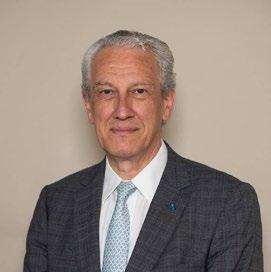
The 10th Congress of the European Academy of Neurology took place in Helsinki, Finland, on 29 June to 2 July. This time it represented much more than an annual congress; it marked a celebration of ten years of hard work, great achievements, and the wonderful sense of togetherness that bonds our European neurology community.
During four days of cutting-edge research, unique educational opportunities, deep discussion, industry buzz, and enthusiastic networking, we enjoyed many special moments at a modern, compact congress venue in a beautiful, welcoming city that really helped to emphasis the feeling of being at the “home of neurology”.
This congress review offers a look at some of the highlights of this milestone congress, including facts, figures, photos, and videos from Europe’s biggest neurology meeting.
With 7,092 onsite attendees – a new EAN record –the Messukeskus was a real hive of activity, welcoming 460 invited lecturers and the presenters of 2,380 accepted abstracts to deliver a comprehensive congress programme covering every subspecialty of neurology and catering to the needs of participants at all career stages.
Our exhibition covering 2400m2 and featuring 94 exhibitors also gave participants the perfect chance to discover the latest innovations in neurological products and services and to connect, not only with industry partners, but also with non-profit medical organisations in our Neurohood.
Thank you to all of you who participated. Whether you were a speaker, an author, one of our 9,024 registered onsite and virtual participants , an industry representative, a member of staff, or any of the many other roles at EAN 2024, you played a part in a historic, record-breaking event for the EAN; one that sets us on our way into our second decade with more enthusiasm and a more energised community than ever before.
Paul Boon EAN President
Happiness was at the centre of the Opening Session of EAN 2024, the 10th congress of the European Academy of Neurology (EAN) in Helsinki, Finland, with positive news and inspiring guests marking the first day of the meeting.
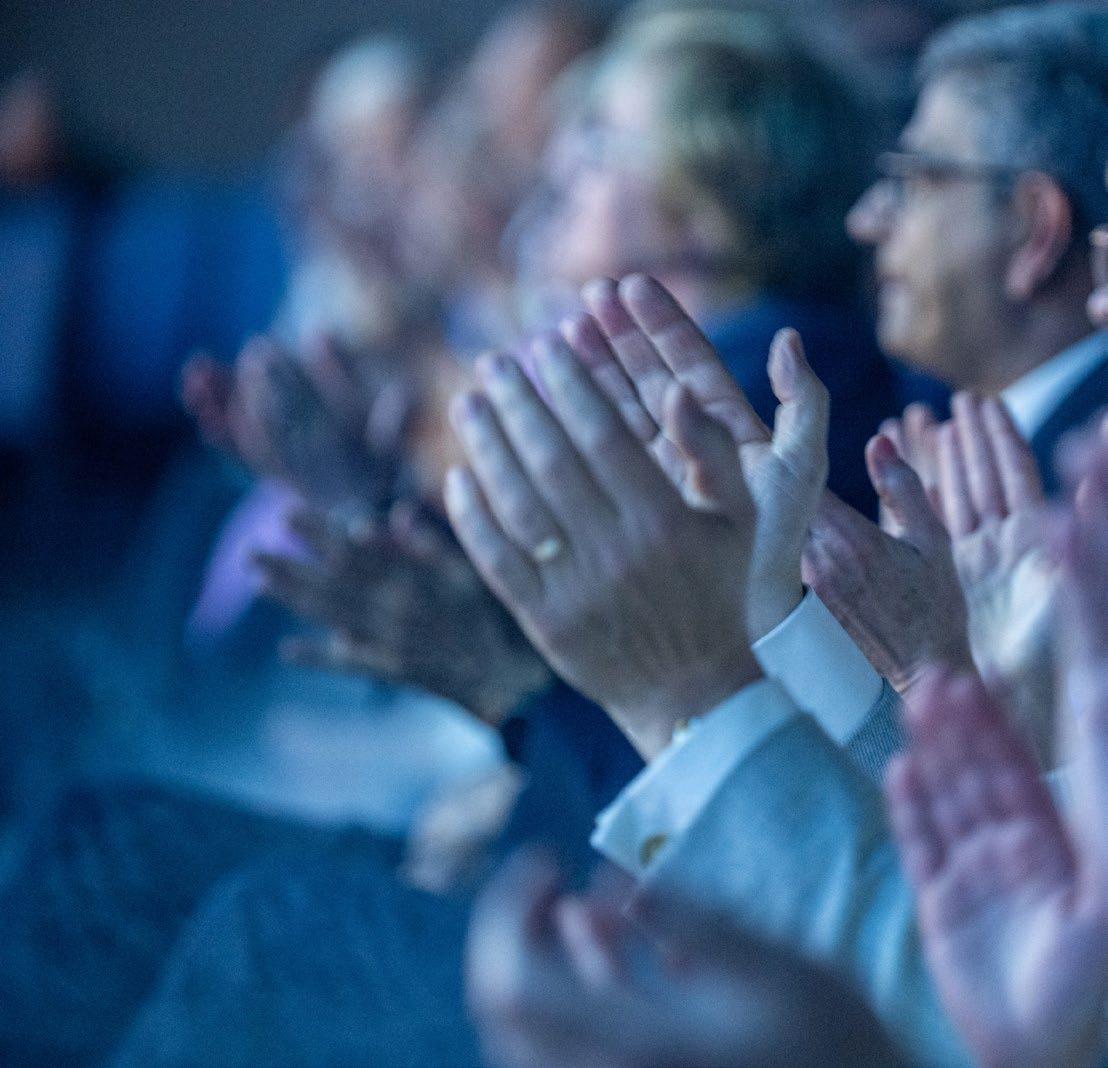

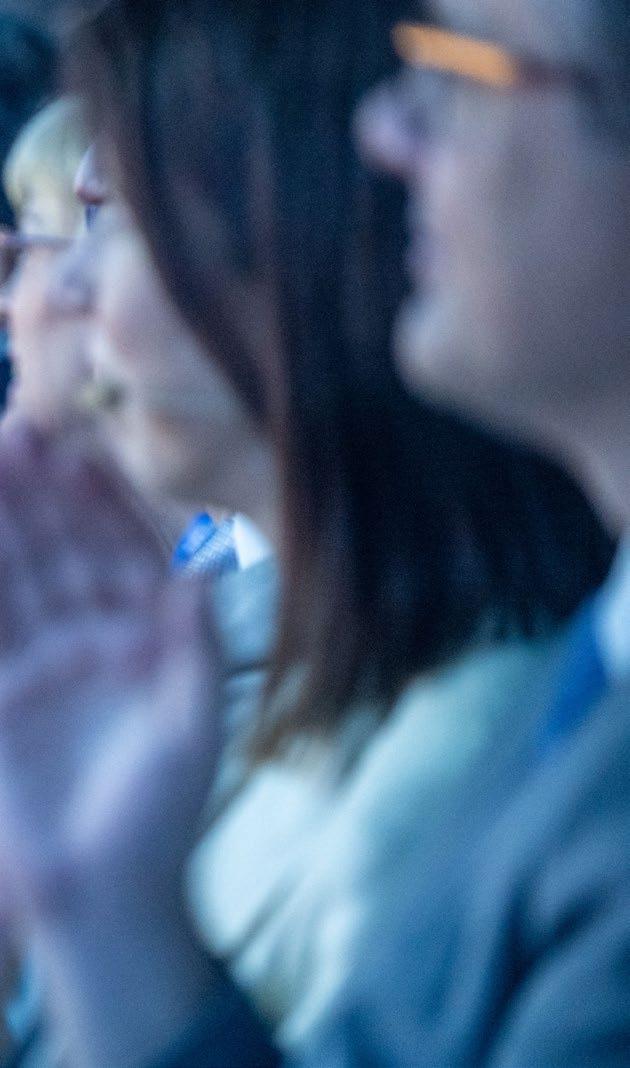
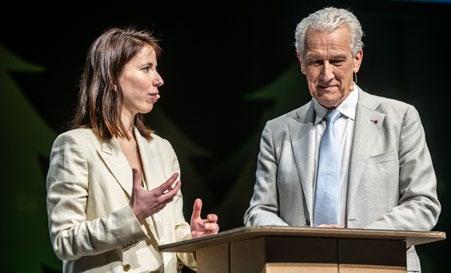
EAN President Prof. Paul Boon kicked off the session by reflecting on the achievements of the society, which celebrates its tenth anniversary this year. “Cumulatively we have reached 110,000 participants - about 50,000 onsite, more than 60,000 virtually,” he said. “Tens of thousands of abstracts have been presented, 10,000 hours of video content watched, and more than 20,000 individuals have held membership in the past decade.”
Boon, and co-host Dr Alice Accorroni, Chair of the Resident and Research Fellows Section (RRFS), placed great emphasis on the future of the society during their opening speech, looking in detail at the activities of the RRFS, which represents a community of young neurologists that make up 52 % of EAN membership.
With over 7,000 onsite and nearly 2,000 virtual participants, EAN 2024 saw record attendance, while the congress also set records in terms of invited speakers and submitted abstracts.
Boon highlighted the importance of connections with the 48 national neurological societies, including the recent addition of Malta, and praised the contribution of EAN’s 28 scientific panels, noting major achievements such as the strategic neurological research agenda for Europe which he hoped would enhance the face of clinical neurology in Europe.
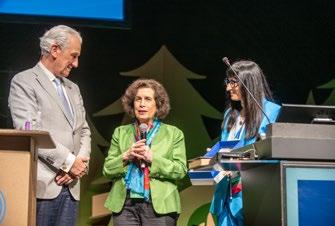
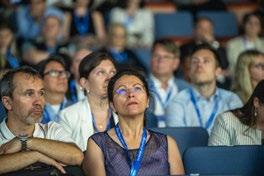
He also highlighted the new task forces the EAN has recently set up, including those on environmental influences in neurology, AI in clinical neurology, and neurologists’ wellbeing and burnout prevention.
The neuro-art contest launched by the RRFS to celebrate EAN’s anniversary also got a mention. “Creativity and art can boost your wellbeing and promote brain health, which is at the centre of the EAN agenda,” Accorroni said. Boon added, “Brain health refers to optimal overall functioning of the brain, maintaining cognitive powers, emotional wellbeing, and the ability to think, learn, and remember. This involves a healthy lifestyle, brain-stimulating activities, and measures to prevent cognitive decline and possibly prevent neurological disorders.”
The EAN launched the Brain Health Mission in 2023, a collaborative effort with various stakeholders, including government agencies, to promote and improve brain health.
This year’s special guest speaker, Dominique Persoone, creator of the Chocolate Line lab in Brussels, offered a unique presentation on chocolate’s effects on the brain. A few years ago, he invented the ‘chocolate shooter’ for Mick Jagger’s birthday party, which involves snorting chocolate powder mixed with mint and ginger to allow the aromas to be absorbed by the brain.
Persoone’s demonstration delighted the audience. Boon reviewed the benefits of chocolate, emphasising its high levels of cacao flavonoids, which increase dopamine release and counter oxidative stress
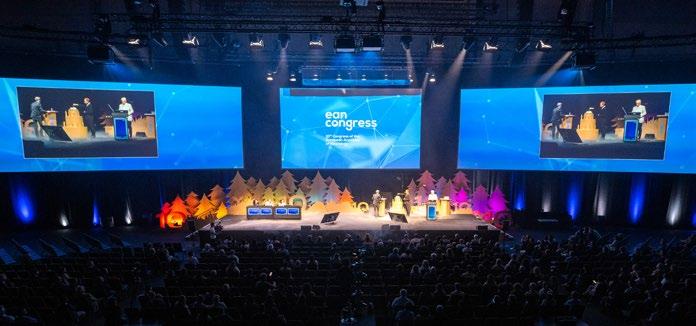
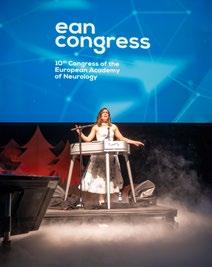
Finnish singer and kantele player Ida Elina (above) and Belgian chocolatier Dominique Persoone (bottom right) brought a touch of multi-sensory magic to the EAN 2024 Opening Session

and inflammation, underlying mechanisms of brain aging. Research shows that dark chocolate intake can improve brain plasticity and cognitive resource efficiency.
Persoone then invited the audience to taste three of his culinary creations, enhancing the experience with ambient sound and specially concocted aromas sprayed throughout the audience for a truly multisensory experience.
Following the chocolate tasting, Prof. Claudio Bassetti, EAN Past President, invited the board to cut a birthday cake to mark the EAN’s 10th anniversary. Prof. Elinor Ben-Menachem and Prof. Niels Erik Gilhus then received EAN Honorary Membership from Prof. Boon and EAN President-Elect Prof. Elena Moro.
Prof. Reetta K. Kälviäinen, President of the Finnish Neurological Society, presented Finland, named the happiest country in the world for the seventh consecutive year. The session concluded with a joyful musical performance featuring the Kantele, a traditional Finnish instrument, as a special birthday surprise from the Finnish Neurological Society.
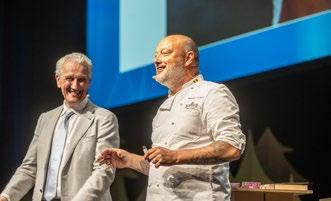



to EAN members only. Please sign into your myEAN account to view.
Aquartet of esteemed Named Lecturers explored the latest advances in neurology using powerful metaphors linking neuroscience to history and the celestial during the Presidential Symposium on the second day of EAN 2024 in Helsinki, Finland.
EAN President Prof. Paul Boon, co-chaired the session with Prof. Valtteri Kaasinen, and introduced Prof. Michael Eldon Greenberg, Brain Prize 2023 winner, who discussed how nature and nurture regulate brain development and plasticity. Prof. Greenberg emphasised the SCG2 gene’s role in endothelial
“Understanding SCG2 function could offer therapeutics to neurologists, potentially preventing epilepsy.”
cell proliferation, migration, and angiogenesis. He noted, “Understanding SCG2 function could offer therapeutics to neurologists, potentially preventing epilepsy and aiding brain disorder development.”
Prof. Britta Engelhardt delivered the Camillo Golgi Lecture on CNS immune privilege, focusing on the brain's multiple barriers. “At the microvascular level, we have the vascular blood brain barrier,” she explained. “The CNS also has a second barrier: an older blood brain barrier in vertebrates set up by



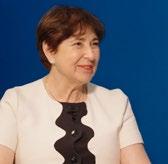

astrocytes.” She highlighted the dual membranes at the capillary level and the presence of antigen-presenting cells in the tiny interspace at the post-capillary venule level. Using the Marienfestung castle as a metaphor, she described the immune privilege as a historical concept, comparing the CNS barriers to a castle's outer and inner walls.
Prof. Marie Vidailhet presented the Charles Eduard Brown Sequard lecture, discussing how clinical observations
“Pay attention to the unexpected. Think of singularity; everyone is unique.”
challenge neuroscience. She drew parallels between clinical observation and the development of telescopic technology, emphasising the importance of understanding dystonia-like movement disorders. “This mere movement is not only the anatomy but also involves a constellation of genes,” she said, pointing out that many new genes and proteins work together. Prof. Vidailhet underscored the shift from the ‘one gene, one disease’ concept to a more complex understanding of genetic and protein interactions. She shared an example of a
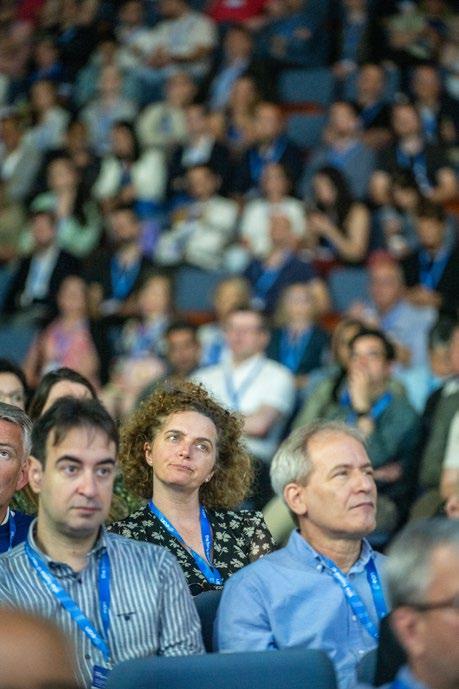
colleague’s research showing that coffee improved patient conditions, demonstrating neurology's new era of treatment based on pathology.
Prof. Vidailhet emphasised the importance of individual variability and the need for neurologists to think outside the box. “Pay attention to the unexpected. Think of singularity; everyone is unique. Time matters: you have to follow your patients for a long time. And pay attention to aging, as it’s a process itself,” she advised.
Finally, Prof. Nils Erik Gilhus, who received EAN honorary membership, gave the Moritz Romberg lecture on individualised treatment of myasthenia gravis, a condition where nerve-muscle communication breaks down. Symptoms include muscle weakness, double vision, drooping eyelids, and difficulty with speaking, chewing, swallowing, and breathing, often leading to depression. Prof. Gilhus stressed the need to balance standardised algorithms and personalised therapy. “Subgrouping patients according to antibody target and age at symptom onset remains the best strategy so far, but it’s not enough,” he said. He highlighted the need for biomarkers to better reflect patient subgroups for similar therapy responses and prognosis. “Finding such biomarkers would be perfect subgrouping. I’m sure we will improve.”



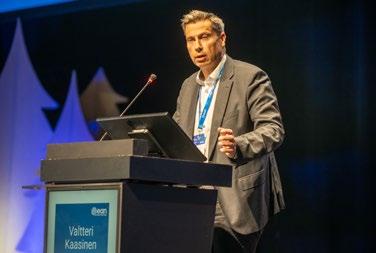



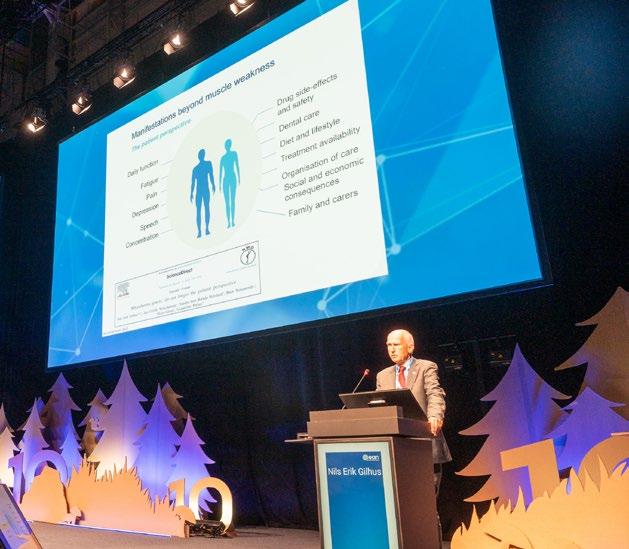



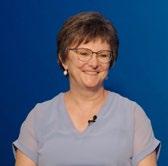
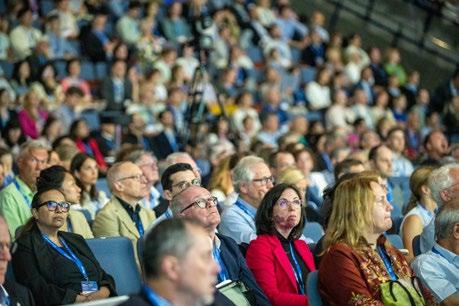

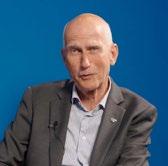
EAN TV STUDIO SESSION: SEX
DIFFERENCES IN PATIENTS WITH NEUROLOGICAL DISORDERS
IMPACT CLINICAL OUTCOMES

On the third day of EAN 2024, the 10th Congress of the European Academy of Neurology (EAN) in Helsinki, Finland, speakers discussed sex differences in patients with neurological disorders and their impact on clinical outcomes.
“There is growing awareness of gender differences in all aspects of the diagnosis and management of neurological diseases,” said Prof. Marianne de Visser from Amsterdam University Medical Center, Netherlands, opening the discussion in the EAN TV studio.
Dr. Valeria Caso from Santa Maria de la Misericordia Hospital, Italy, focused on the risk factors, prevention, and treatment of stroke.
“There are gender differences in stroke, but we can solve this,” she said.
She predicted that while stroke incidence is decreasing overall, it will rise among younger women due to smoking,
processed food consumption, and sensitivity to pollution.
“We treat older ladies in their 90s well, but not the youngest,” she said.
“Women have a 25 % lifetime risk of stroke, rising to 36 % in Eastern Europe, much higher than men and absolutely unacceptable.”
“Women have a 25 % lifetime risk of stroke ... much higher than men and absolutely unacceptable.”
Though acute stroke unit treatments are equal, delays in onset to door and endovascular treatment for women persist.
“That is unacceptable,” Caso said.
“Women are often underestimated at stroke risk, with less clear features compared to men. Recurrence risk is also higher in women.”
Neurologists must recognize a specific biological substrate for women, she argued. “Pregnancy-related diseases increase stroke risk,” she explained.
“I now ask patients about clamps and preeclampsia, which I never did before.”

Women have more atrial fibrillation and hypertension, partly due to hypotensive lives followed by dramatic post-menopause changes. Women need education on these risks, especially after 65, when they should monitor their pulse due to higher stroke risks and potential undertreatment.
Regarding access to care, gender inequality indices correlate with higher stroke risks for women. “If women can’t travel without a man or there’s no legislation against domestic violence, their stroke risk is higher,” she emphasised.
Post-stroke, women often have poorer quality of life, with more cognitive decline and depression. “Men maintain muscles at 80; women have tissue that’s harder to recover. We must teach women to age healthily,” she added.
Prevention improvement hinges on self-care. “Women often prioritise others over their brain health. They need to stay healthy to help others.”
Dr. Haidar Dafsari from Cologne University, Germany, discussed gender differences in Parkinson’s disease (PD), focusing on deep brain stimulation (DBS) treatment.
“Future studies should focus on the decision-making process rather than outcomes.”
“PD is more prevalent in men, with a 1.48 men to 1 woman ratio,” he said. “Women are less likely to receive DBS surgery. At our center, the ratio was 2 to 1 over 5.5 years.”
Of those referred for DBS, 102 were women and 214 were men. Women were disproportionately less frequently referred.
Preoperatively, women had longer mean duration and more severe dyskinesia. Despite this, DBS was equally effective in improving quality of life and symptoms in both genders.
“The gender bias is systematic, observed in Europe and the USA,” he noted. “Future studies should focus on the decision-making process rather than outcomes to address these disparities.”
Dr. Jana Zschüntzsch from Göttingen University, Germany, explored differences in myasthenia gravis, an autoimmune disease causing muscle weakness.
“Gender differences influence diagnosis, treatment, and the long-term course of myasthenia gravis,” she said. “Women tend to have a generalised form of the disease, while men often exhibit a faster-diagnosed ocular form.”
The generalised form, less frequently diagnosed and with earlier onset in women, typically peaks in the second to fourth decade of life, leading to a higher impact in women.
“We need more awareness among the population,” she concluded. “For women, some diseases set them back temporarily.”

This interesting EAN TV session organised by the European Brain Council examined the different action currently being taken by all the relevant stakeholders – of which the EAN is one of the major representatives – in promoting brain health in Europe through a European Brain Health plan. The session makes it clear that the key to promoting this campaign is fostering the importance of promoting brain health to encourage a better life and a better society. Therefore, every single member of the European neurology community, and every stakeholder, must share a common vision about fostering a healthy brain and take a place on the frontline in promoting this campaign.
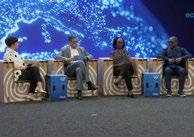
“With our unity we can achieve what we want to achieve” Sarah Urasa
“If you want to promote brain health, we need to work in synergy with different stakeholders”
EAN Past President, Claudio Bassetti
This EAN TV Studio session, hosted jointly by the European and the African Academy of Neurology, brought together experts from Tanzania, Tunisia, and Cameroon. They highlighted the role that societies such as the EAN and the AFAN play in providing educational opportunities for neurologists in Africa, especially in regions with fewer resources. Importantly, they also emphasised the need for advocacy and awareness building, not only for education, but for brain health as a whole, and praised the efforts of the EAN over the last few years.
“For the medical students, I will say that during their career there will be effective treatments against ALS”
Pentti Tienari

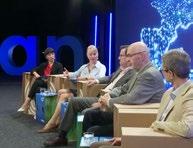
This EAN TV session on the past, present, and future of Finnish contributions towards Brain Health, and in deepening our understanding of brain diseases, featured three global experts with Finnish roots.
Pentti Tienari from the University of Helsinki explained how a relatively isolated population can provide unique opportunities for studying genetic diseases. He was followed by Matti Hämäläinen from Aalto University, Helsinki, currently at Harvard Medical School, who shone the spotlight on current advances in magnetoencephalography. Lastly, Alina Solomon, from the University of Eastern Finland, talked about the hugely important FINGER initiative, an approach to preventing cognitive decline and dementia, which has now evolved into a European project.
What defines the modern-day Odysseus within the field of neurology? What motivations drive neurology trainees on their quests across diverse countries, and how does this intricate migration pattern reshape global access to neurological care while influencing the communal identity within the neurology resident community?
This insightful EAN TV session, co-organised by EAN RRFS representatives, explores how neurology trainees, driven by various motivations, migrate across countries. A diverse panel of speakers help to examine how this migration impacts global neurological care access and shapes the identity of the neurology resident community. A ‘must watch’ for students and residents considering an international career.
“Most of the people in our study who have migrated, would consider migrating again”
Dmitar Vlahovic

The third Plenary Session of the EAN 2024 Congress in Helsinki, on ‘Invasive neuromodulation: Hot topics and future directions’ provided an engaging overview of current advancements and applications in the field. It covered a range of topics including deep brain stimulation (DBS), ultrasound techniques, vagal nerve stimulation (VNS) and spinal cord stimulation, each discussed by leading experts. The session attracted a large audience, indicating high interest and enthusiasm for these emerging therapies.
EAN President-Elect, Elena Moro offered a comprehensive overview of the current state of DBS, especially in treating Parkinson’s disease and dystonia. She emphasised how DBS is becoming more precise and tailored to individual patients. The use of advanced
electrodes and the integration of neuroimaging and neurophysiological techniques allow for highly accurate targeting of brain structures. This precision facilitates the exploration of new stimulation targets. Notably, some studies have shown promising results with the stimulation of the globus pallidus and cerebellum for dystonia, as well as the subthalamic nucleus and substantia nigra for Parkinson’s. Artificial intelligence further enhances DBS by adapting stimulation parameters based on the activity of the targeted structures during both wakefulness and sleep.
Martinez Fernandez discussed the role of high-frequency focused ultrasound in creating lesioning effects in the basal ganglia. Techniques such as thalamotomy, subthalamotomy, and pallidotomy can significantly reduce tremors
to right) EAN President, Paul Boon; EAN President-Elect, Elena Moro; Cecile de Vos; session co-chair, Jukka Peltola; Raul Martinez Fernandez.

in Parkinson’s disease, with effects lasting over time. The precision of these methods is enhanced by MRI guidance, making them increasingly selective and effective. Recent pilot studies have also demonstrated the efficacy of high-frequency ultrasound stimulation in treating conditions like neuropathic pain, obsessive-compulsive disorder, and epilepsy, opening new research avenues.
Low-frequency focused ultrasound also offers exciting possibilities. By increasing the permeability of the



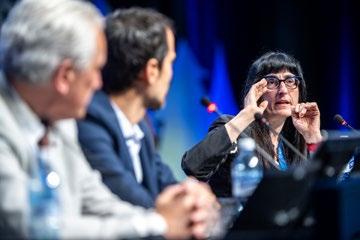
blood-brain barrier, it can facilitate the delivery of drugs like aducanumab for Alzheimer’s disease and chemotherapeutics for brain tumours. This approach represents a novel way to enhance the efficacy of pharmacological treatments.
EAN President Paul Boon highlighted the efficacy of VNS and DBS in the anterior nucleus of the thalamus for refractory epilepsy. More than 40 % of patients respond positively to VNS. He also discussed the comparative effectiveness of VNS and DBS, with DBS being slightly more effective, while VNS offers cost reductions. Innovative techniques like chemogenetics and optogenetics could be considered to treat epilepsy by selectively targeting hyperactive cells. Although still in the preclinical stage, these methods show promise due to their
specificity, despite challenges such as high costs and invasiveness.
Cecile de Vos discussed spinal cord stimulation for chronic pain, particularly for persistent spinal pain syndrome and complex regional pain syndrome. This method involves placing electrodes at the level of A-beta fibres in the epidural space. Despite high costs and variability in stimulation methods, more than 50 % of patients experience significant relief. Although spinal cord stimulation has become more precise and effective over the years, there is a lack of multicentre randomised clinical trials against placebo. The need for objective measures to assess pain and treatment efficacy was also emphasised.
In summary: the session on neuromodulation provided valuable insights
into the current and future landscape of neurological treatments. From the precision of DBS and innovative use of ultrasound to the potential of VNS and emerging genetic techniques, the discussions highlighted both advancements and ongoing challenges in the field. All the speakers emphasised that, through the increasing understanding of the pathophysiological mechanisms of neuronal networks and the technological development of neuromodulation devices, it is possible to deliver increasingly effective and precise therapy. However, the high costs of these therapies limit their study through multicentre randomised clinical trials, which could provide even more precise information.
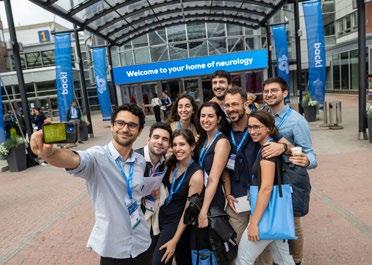
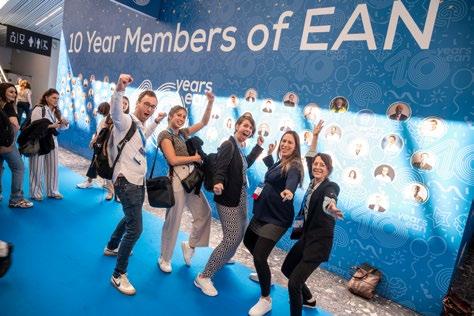
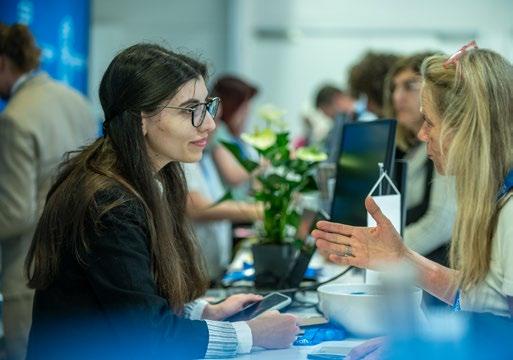
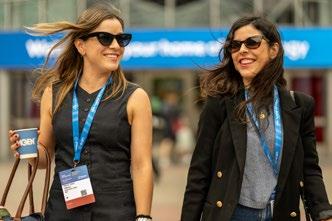
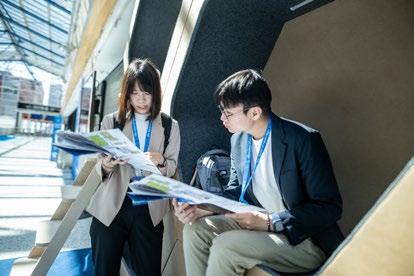



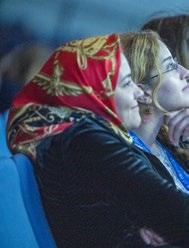





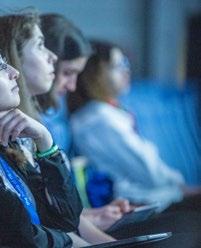
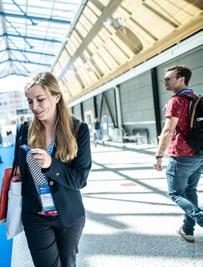
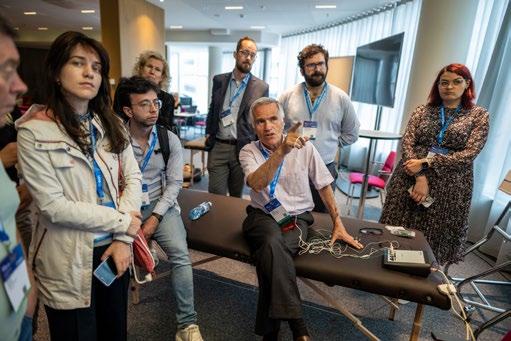

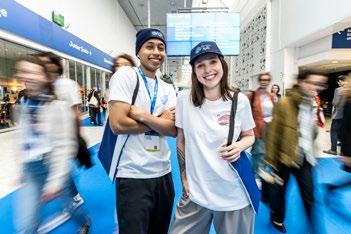
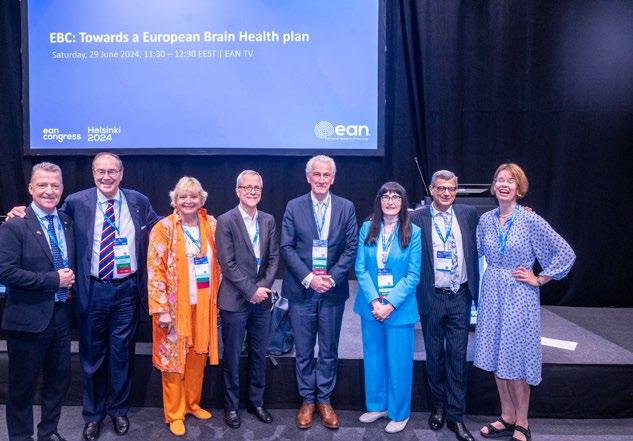
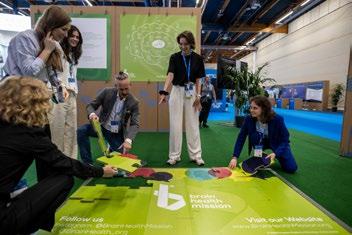



On the last day of EAN 2024, held in Helsinki, Finland, EAN President Prof. Paul Boon chaired the Highlights and Breaking News session alongside EAN Programme Committee Chair Prof. Ulf Kallweit and EAN President-Elect Prof. Elena Moro, to whom he handed over the EAN presidency.
Boon announced the winners of the EAN Tournament, starting with the victor in the basic category, Dr. Jari Gool, for his study on widespread white matter axonal loss in narcolepsy type 1 (NT1), a severely disabling neurological sleeping disorder characterized by excessive daytime sleepiness and cataplexy, caused by hypocretin-1 deficiency.
“The effects of hypocretin deficiency remain largely unknown although recent diffusion tensor imaging studies have suggested that there’s widespread reduced white matter integrity in NT1,” said Gool. However, the exact mechanisms behind these differences remained unknown, and Gool studied whether they could be due to lower axonal density, lower myelination, or increased axon diameter. He found lower axonal density but did not find consistent myelin integrity differences. “This is in line with the typical hypocretin projection pattern that we know,” he said.
The winner of the clinical category, Dr. Adidemi Otaiku, presented the prospective study he carried out in three
population-based cohorts on distressing dreams, cognitive decline, and risk of dementia.
“Dreams can predict the future, and more specifically the frequency with which we have bad dreams and nightmares can predict our risk of future dementia,” he said. There is a lot of literature linking dreams and nightmares to Parkinson’s disease (PD). PD patients’ dreams are characterized by increased aggression, and these patients are four times more likely to experience frequent nightmares, he explained.
“In 2022 I showed that healthy individuals who experience bad dreams or nightmares every week are two-to-three times more likely to develop PD over the next decade,” he said. In another study in people who were newly diagnosed, Dr. Otaiku found that those who experienced frequent bad dreams were six times more likely to be disabled after five years, their cognition declined 33 % faster and they were more than twice as likely to develop dementia. “That made me wonder if distressing dreams could also predict dementia,” he said.
Compared with middle-aged adults who reported having no distressing dreams at baseline, those who reported having weekly distressing dreams had a four-fold risk of experiencing cognitive
“The frequency with which we have bad dreams and nightmares can predict our risk of future dementia”
decline. Among older adults, the difference in dementia risk was 2.2 times higher, he found.
Highlights from the Autonomic and Movement Disorders, Epilepsy, Multiple Sclerosis, and Headache sections were also discussed. Prof. Alessandra Fanciulli highlighted the work on autonomic nervous system diseases. “We had six sessions and 53 submitted abstracts on the topic, which is a huge rise from last year when we had 15 abstracts,” she said.
Prof. Christine Klein and Prof. Bas Bloom then presented the highlights of the movement disorders section. Hot topics included controversies in Parkinson’s disease diagnosis due to the new biological classification of PD.
The new gene PSMF1, which causes neurodegeneration when mutated earlier in PD, was presented during the meeting, as well as another pathogenic variant in wrap 32, which closely interacts with low 2, one of the best known and most common PD genes. There was also a lot going on in tremor, and not just PD, but also essential and dystonia tremor, Prof. Bloom said. “One study, in which I am involved, showed that whole brain integration, which happens under the influence of stress and adrenaline, already happens 13 seconds prior to the onset of a clinically manifest tremor episode,” he said. “That opens a door to treating this
“In terms of submitted abstracts per square kilometre of country, Rwanda won the competition”
component of tremor with propranolol, an old drug that can reduce the dimmer by damping the amplitude of the tremor.”
Prof. Arjune Sen showcased the highlights of the epilepsy section and gave special mention to a tiny country in Africa. “In terms of submitted abstracts per square kilometre of country, Rwanda won the competition,” he said.
Finally, Prof. Pablo Irimia touched on headache. He singled out work on brain stimulation, the meeting with the Headache Federation, and the symposia with the epilepsy and stroke sections.
Prof. Irimia also shared details about EAN 2025 Congress, which will take place in Seville, Spain on June 21-24, with the overarching theme of Neurology within Society.
The annual EAN BrainChallenge quiz took place on Sunday afternoon for the 7th time and again brought an entertaining and challenging competition to the stage of the Main Auditorium at EAN 2024. Two teams, Team International and Team Finland, were competing against each other and the audience took part via interactive voting.
Sixteen cases were selected for this year’s show, and after the answer is revealed, a short educational explanation is given, allowing everybody to take new knowledge with them.
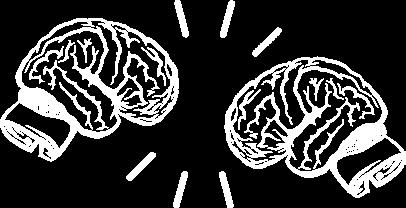
Thanks must go to all EAN Scientific Panels, who submitted cases for the EAN Brain Challenge 2024:
Paolo Barone Movement Disorders
Anna Bersano
Scientific Panel on Stroke
Roberto Erro Movement Disorders
Simon Fandler-Höfler
Scientific Panel on Stroke
Questions at different difficulty levels were divided into four categories:
‘Those muscles’
‘ Everything started with a headache’
‘Too much or too little’
‘When they fire’.
In the first part of the show, teams are given multiple-choice questions while in the second part, they have to answer open questions as fast as they can by hitting the buzzer first.
This year, the local Finnish team competed against an international team, guided by three moderators: Margitta Seeck (Switzerland), Adolfo Mazzeo (Italy) and Conny Lee (Austria).
Massimiliano Filosto Scientific Panel on Muscle and NMJ disorders
Rolf Fronczek Scientific Panel on Headache
David Garcia Azorin Scientific Panel on Headache
Mario Habek
Scientific Panel on Autonomic nervous system disorders
Sonja Hochmeister Scientific Panel on Neurocritical care
Stefano Meletti Scientific Panel on Epilepsy
Federica Montagnese
Scientific Panel on Muscle and NMJ disorders
Tiziana Mongini Scientific Panel on Muscle and NMJ disorders
Patricia Mulero Scientific Panel on Multiple Sclerosis
Alberto Picca Scientific Panel on Neuro-oncology
Marina Picillo Movement Disorders
Gabriela Rusin Scientific Panel on Clinical Neurophysiology
Benedetta Storti Scientific Panel on Stroke

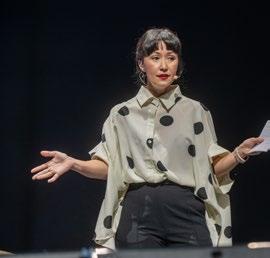

Zaruhi Tavadyan Scientific Panel on Movement Disorders
Guido Urbano
Scientific Panel on Muscle and NMJ disorders
Roland Wiest Scientific Panel on Neuroimaging
BRAIN CHALLENGE TASK FORCE:
Claudia Sommer
Viktoria Papp
David Garcia Azorin
Ambra Stefani

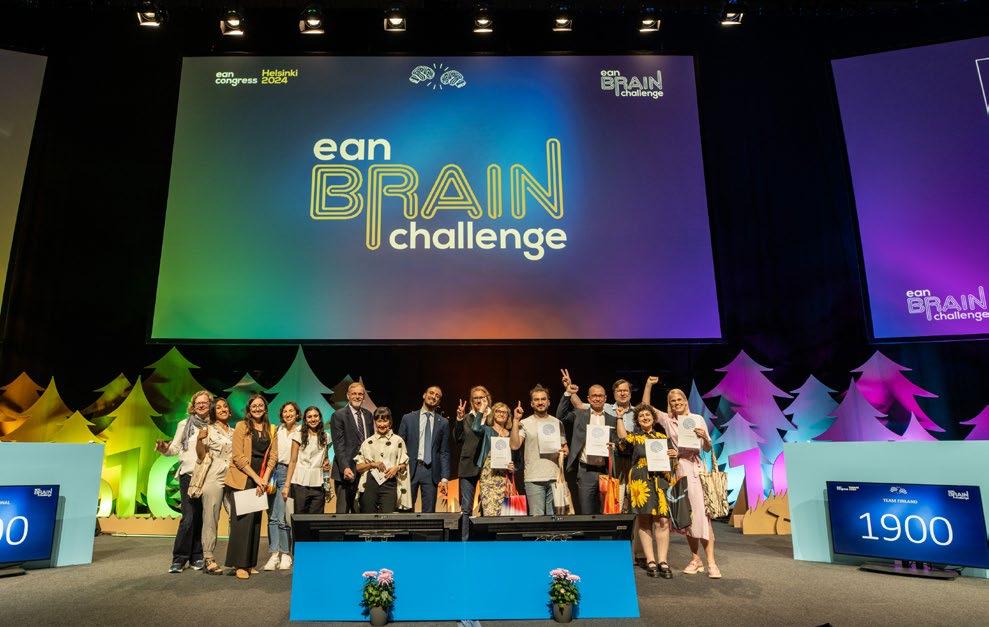


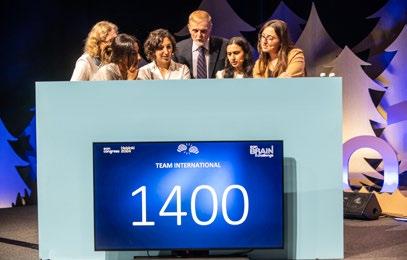
Yasser Amhdak, Michela Losurdo, Mika Martikainen, Elina Myller, Marjaana, Tiainen, Pentti Tienari Team Finland Team International


Maria Bonello, Natan Bornstein, Chiara Ferrazzoli, Heena Narotam Jeena, Martina Wiedau, Busra Zeybek
The fabulous Finnish finally finished first; however, both teams and the audience gave a great performance.
THANK YOU ALL FOR CONTRIBUTING AND PARTICIPATING IN THE 2024 EDITION OF OUR POPULAR QUIZ SHOW!
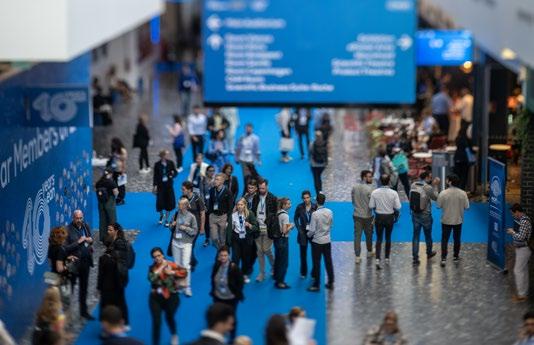
OThe EAN gratefully acknowledges the support and commitment of our industry partners for EAN 2024 and throughout our first decade.
ur onsite exhibition at EAN 2024 featured some of the world’s top pharmaceutical and medical technology companies, spread out across 2,400m2 of space at the Messukeskus, giving attendees the chance to catch up with the latest industry developments and innovations direct from the source.
A great range of industry sessions also took place onsite in Helsinki and streamed live via the Virtual Congress Platform, offering congress participants a chance to take a deep dive into our partners’ data, research, and product offerings. Registered congress participants with EAN membership can still access many industry sessions via our Virtual Congress Platform. Just click the link below!
Premium Sponsors
Major Sponsors




Top Sponsors


Contributors





FROM COUNTRIES
SCIENCE SPREAD ALL OVER THE WORLD: PARTICIPANTS INDUSTRY PARTNERS
INVITED SPEAKERS 368
2,346 EXHIBITION
SUBMITTED ABSTRACTS
TOTAL
25,000
AVERAGE STEPS PER STAFF MEMBER
2,777 82
2,380
ACCEPTED ABSTRACTS
PARTICIPANTS SESSION ROOMS 15
31,185
288 SESSIONS


